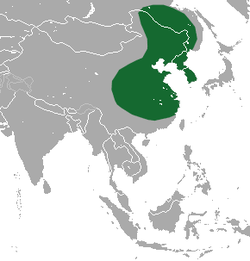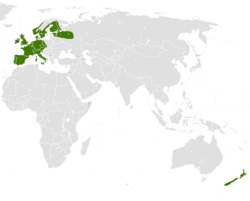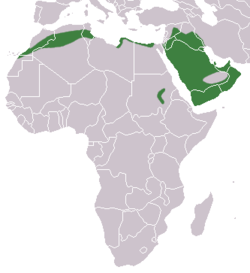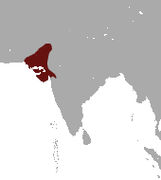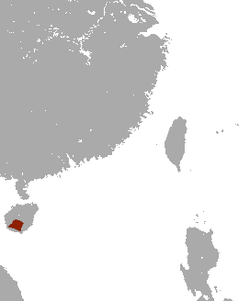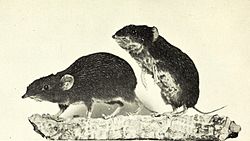Top Qs
Timeline
Chat
Perspective
List of erinaceids
Species in mammal family Erinaceidae From Wikipedia, the free encyclopedia
Remove ads
Erinaceidae is a family of small mammals in the order Eulipotyphla. A member of this family is called an erinaceid, and the family includes hedgehogs and gymnures. Erinaceidae is one of four families in the order Eulipotyphla.[1] They are found in Africa, Europe, and Asia, primarily in forests, shrublands, savannas, and grasslands, though some species can also be found in deserts, rocky areas, or caves. They range in size from the gymnures in the Hylomys genus, at 9 cm (4 in) plus a 1 cm (0.4 in) tail, to the moonrat, at 46 cm (18 in) plus a 30 cm (12 in) tail. Erinaceids are omnivorous and primarily eat insects and small vertebrates such as lizards, though they also consume plants, eggs, and fungi. Hedgehogs all have spines on their backs, while gymnures have fur. No erinaceids have population estimates, but the Hainan gymnure and Dinagat gymnure are categorized as endangered species.

The twenty-four extant species of Erinaceidae are divided into two subfamilies: Erinaceinae, containing sixteen hedgehog species in five genera, and Galericinae, containing eight gymnure species in five genera. A few extinct prehistoric Erinaceidae species have been discovered, though due to ongoing research and discoveries the exact number and categorization is not fixed.[2]
Remove ads
Conventions
The author citation for the species or genus is given after the scientific name; parentheses around the author citation indicate that this was not the original taxonomic placement. Conservation status codes listed follow the International Union for Conservation of Nature (IUCN) Red List of Threatened Species. Range maps are provided wherever possible; if a range map is not available, a description of the erinaceid's range is provided. Ranges are based on the IUCN Red List for that species unless otherwise noted.
Remove ads
Classification
The family Erinaceidae consists of two subfamilies: Erinaceinae, containing sixteen hedgehog species in five genera, and Galericinae, containing eight gymnure species in five genera.
Family Erinaceidae
- Subfamily Erinaceinae
- Genus Atelerix (African hedgehogs): four species
- Genus Erinaceus (woodland hedgehogs): four species
- Genus Hemiechinus (long-eared hedgehogs): two species
- Genus Mesechinus (steppe hedgehogs): two species
- Genus Paraechinus (desert hedgehogs): four species
- Subfamily Galericinae
- Genus Echinosorex (moonrat): one species
- Genus Hylomys (gymnures): three species
- Genus Neohylomys (Hainan gymnure): one species
- Genus Neotetracus (shrew gymnure): one species
- Genus Podogymnura (Philippine gymnures): two species
Remove ads
Erinaceids
Summarize
Perspective
The following classification is based on the taxonomy described by the reference work Mammal Species of the World (2005), with augmentation by generally accepted proposals made since using molecular phylogenetic analysis, as supported by both the IUCN and the American Society of Mammalogists.[1] The range shown is only for wild populations; domesticated hedgehogs, which are usually four-toed hedgehogs, North African hedgehogs, or hybrids of the two, may live outside these areas.
Subfamily Erinaceinae
Subfamily Galericinae
Remove ads
References
Sources
Wikiwand - on
Seamless Wikipedia browsing. On steroids.
Remove ads










